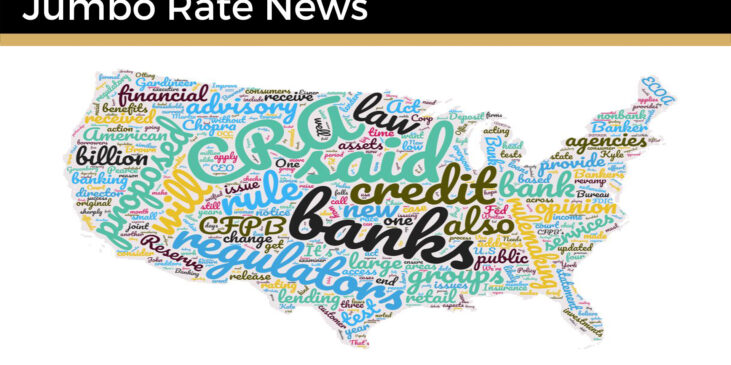When looking at modernizing/improving the Community Reinvestment Act of 1977 (CRA), regulators must look back on the past to see how we got here. This look backward, while disconcerting, is not difficult. Redlining was real. It was an accepted (and documented) way to let lenders know which neighborhoods were “credit-worthy”, and more precisely, which were not.
Lenders extending credit to a person or business within the red lines would charge higher interest rates to compensate for the perceived risk. Used in a similar way that credit reports are used today, redlining was anything but colorblind.
The 1977 Act put an end to the “documented” practice of redlining and instituted periodic exams designed to ensure banks were meeting the credit needs of the entire community, including the low and moderate income areas (LMI).
Banks are expected to do this without compromising their own safety and soundness. The exam grade they receive can (and should) be used to influence decisions on mergers, acquisitions and even new branch openings.
Success of the 1977 Act is difficult to measure. Proponents will say that since some loans were made in LMI neighborhoods that otherwise would not have been, it was a success. In addition, certain charities (like Habitat for Humanity) attract big bank donors to gain CRA credit. Wells Fargo and BofA, for example, have been big partners of Habitat for Humanity for years. Yet, it’s impossible to know if they would be so committed absent the law.
Results are hard to quantify. That may be the biggest problem, but its not the only problem. Exams are inconsistent—from regulator to regulator and even from one examiner to another within the same agency. And now there’s a new problem: How to determine an assessment area in the digital age.
The original concept of extending loans where deposits are gathered has broadened tremendously. And LMI individuals and businesses—both in urban and rural areas, are falling behind the curve. The pandemic has exacerbated this divide. Yet, very few banks have CRA ratings of less than “Satisfactory”. That just doesn’t add up.
In fact, only 37 (mostly small) banks received less than “Satisfactory” grades on their latest Community Reinvestment Exams. Only two of those were rated with the lowest rating: “Substantial Noncompliance”. (See page 7.)
3-Star Lemont National Bank, Lemont, IL received its first “less than Satisfactory” rating from the Office of the Comptroller of the Currency (OCC) in 2012 with a “Needs to Improve” rating. That was followed up in 2015 as “Substantial Noncompliance” (SN). A 2021 exam reinforced that assessment.
1-Star Liberty Bank, Salt Lake City, UT received a “Needs to Improve” Rating from the FDIC in March 2020 but was downgraded to the lowest rating (SN) in November 2021. Liberty Bank has other problems too, posting hefty losses since before the pandemic.
The agencies (Federal Reserve, FDIC & OCC) working together and building on research and feedback from the past several years, now propose to strengthen and modernize the 45 year old CRA. Broadly, they will examine the what, where and how. What activities qualify for CRA credit; Where will these activities take place in order for CRA consideration, and; How will the activities be evaluated. It sounds easy, but it’s not.
The way it’s shaping up, a small bank test (for banks with less than $600 million in assets) will focus on retail lending. Qualifying investments and services may also be considered, but only if the bank first meets the lending standards without them.
The test for intermediate banks (those with assets between $600 million and $2 billion) will combine the retail lending test with a community development test to arrive at one combined score.
Large banks (assets greater than $2 billion) will have four tests that will encompass lending, community development and investment. They will be required to report pertinent information annually for these tests.
Banks of any size may elect to develop a strategic plan that involves community input and the help of its regulator to set out clear and measurable goals.
The proposal does not delineate assessment areas but updates the term to include activities associated with online/mobile/branchless banking as well as hybrid models.
The goal: more uniform and metrics-based CRA evaluations for more consistency overall.


